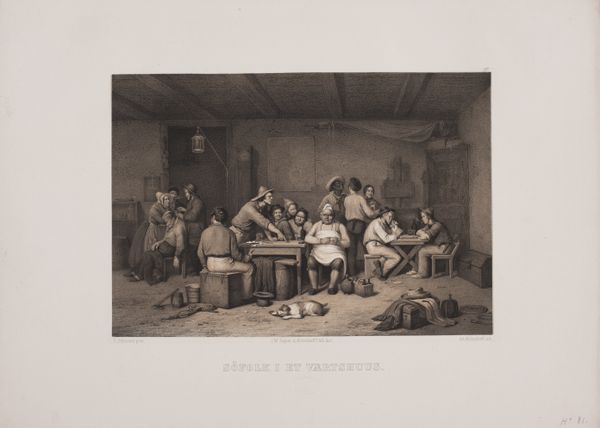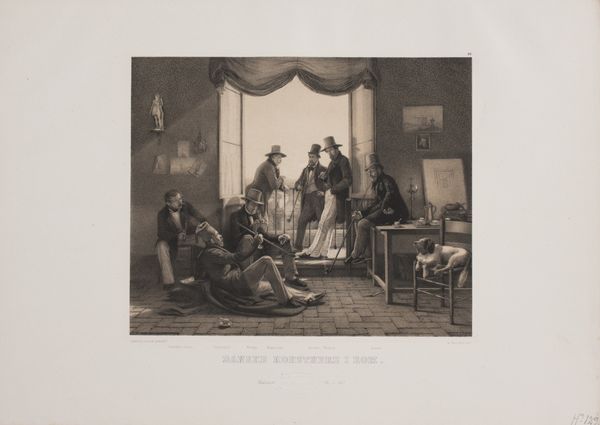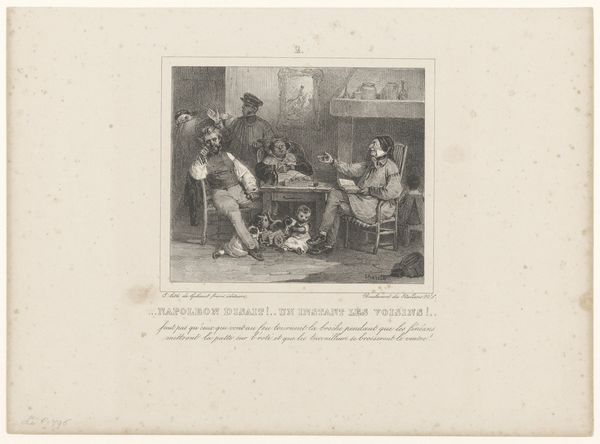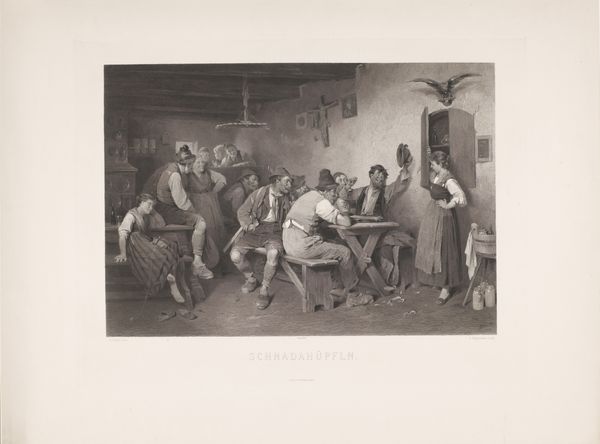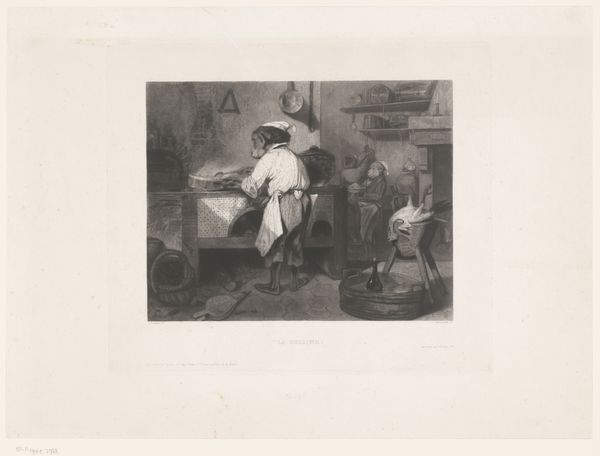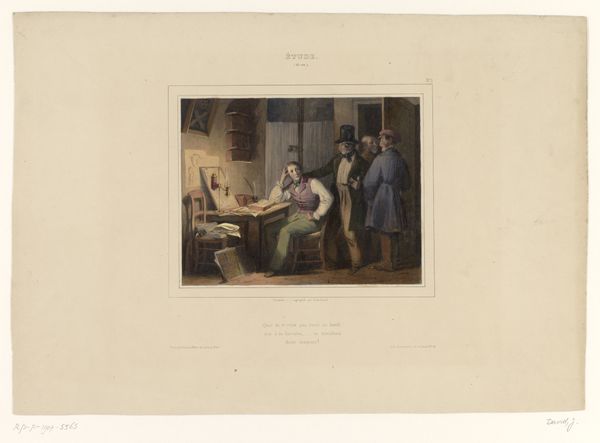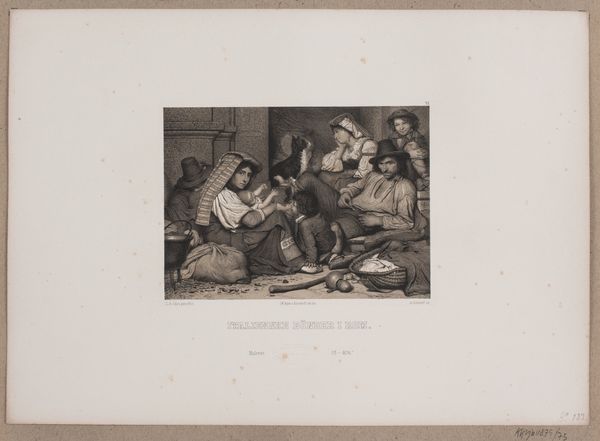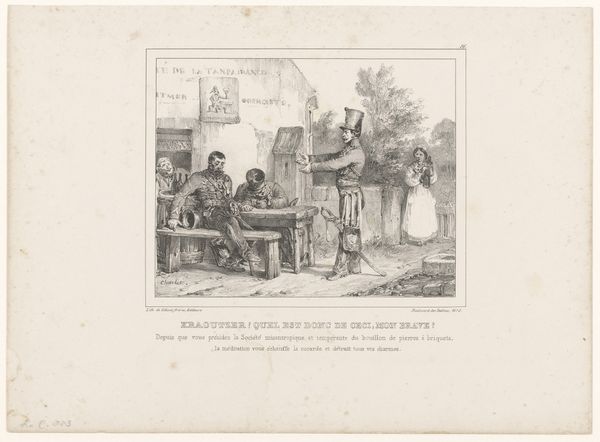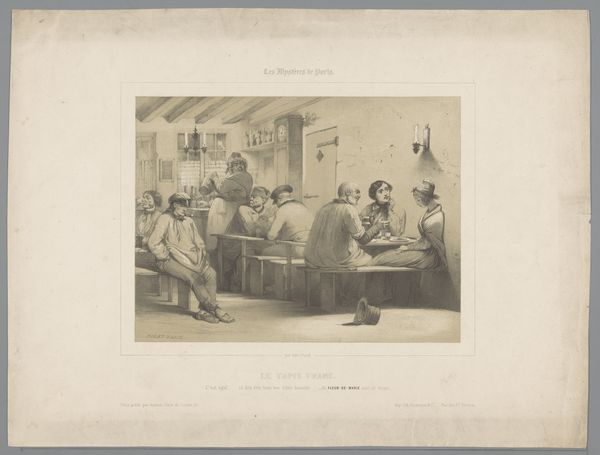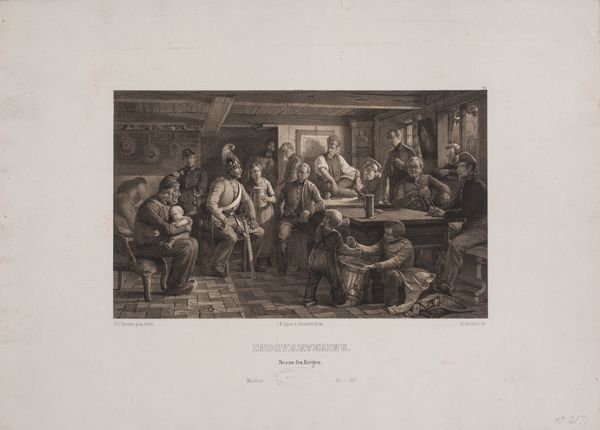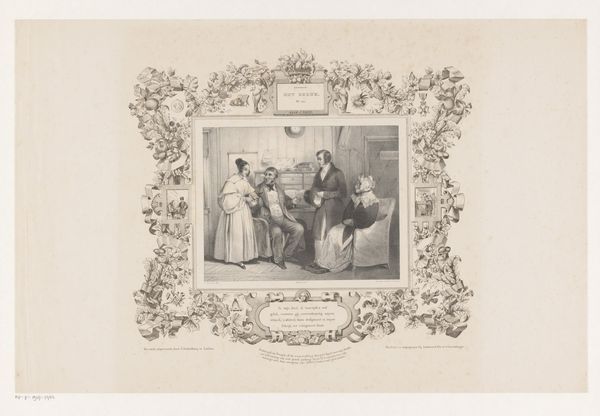
drawing, lithograph, print
#
drawing
#
lithograph
# print
#
genre-painting
#
realism
Dimensions: 287 mm (height) x 398 mm (width) (billedmaal)
Editor: Here we have "Gamle fyre i et Værtshus", or "Old fellows in a tavern," an 1880s lithograph drawing and print by Adolph Kittendorff. It has such a somber and introspective feel. What symbols stand out to you, considering its cultural context? Curator: The most immediate symbol is, of course, the gathering itself. In dimly lit spaces like this tavern, the warmth of shared stories and camaraderie often provided refuge, acting as a cultural crucible for transmitting news and solidifying social bonds. Do you notice anything particular about the figure in the doorway? Editor: The figure standing appears separate, almost an observer. Their posture is more upright than those seated and engaged at the table. What is their role? Curator: That figure might represent an entry point, perhaps bringing news from the outside world into this insulated space, or someone in transit from one sphere to another. Notice too, the men smoking pipes at the table, and reading the papers in what seem to be heated discussion, they too are bringing the outside world in. This action speaks volumes about how communities then absorbed and responded to shifting landscapes. The use of light and shadow further emphasizes this separation. Can you see how this use of Chiaroscuro could give even greater meaning? Editor: I see it, how it spotlights their faces but hides the doorway further back in shadow! That’s incredibly powerful; the print shows isolation from the rest of the world but integration in the tavern. Are these integrated in a shared purpose though? What about the hats that seem to be arbitrarily put on top of each other to the left side of the lithograph? What does this communicate to you? Curator: Well the huddle of hats would be what most academics would suggest alludes to a type of ‘society’, potentially those who were members who had spent time here. To take the analysis a level deeper and thinking about symbolis, is a sense of the shifting hierarchy or shared status within such gatherings. They were bound, not only through geographic region, but class too! This tavern provides us with clues that it was typically a meeting place for blue-collar individuals or ‘lower class citizens’ due to the setting. It would therefore be amiss if a gentleman wearing a silk tophat was depicted. The message communicates class difference, in terms of social mobility through that period of Danish society! A society can become something dangerous to the government. It can give men more solidarity when they discuss their place and influence, which may change a societal status quo. Editor: Wow! That’s such a profound way of looking at it. The artist captures so much complexity in a seemingly simple scene. Thank you.
Comments
No comments
Be the first to comment and join the conversation on the ultimate creative platform.
